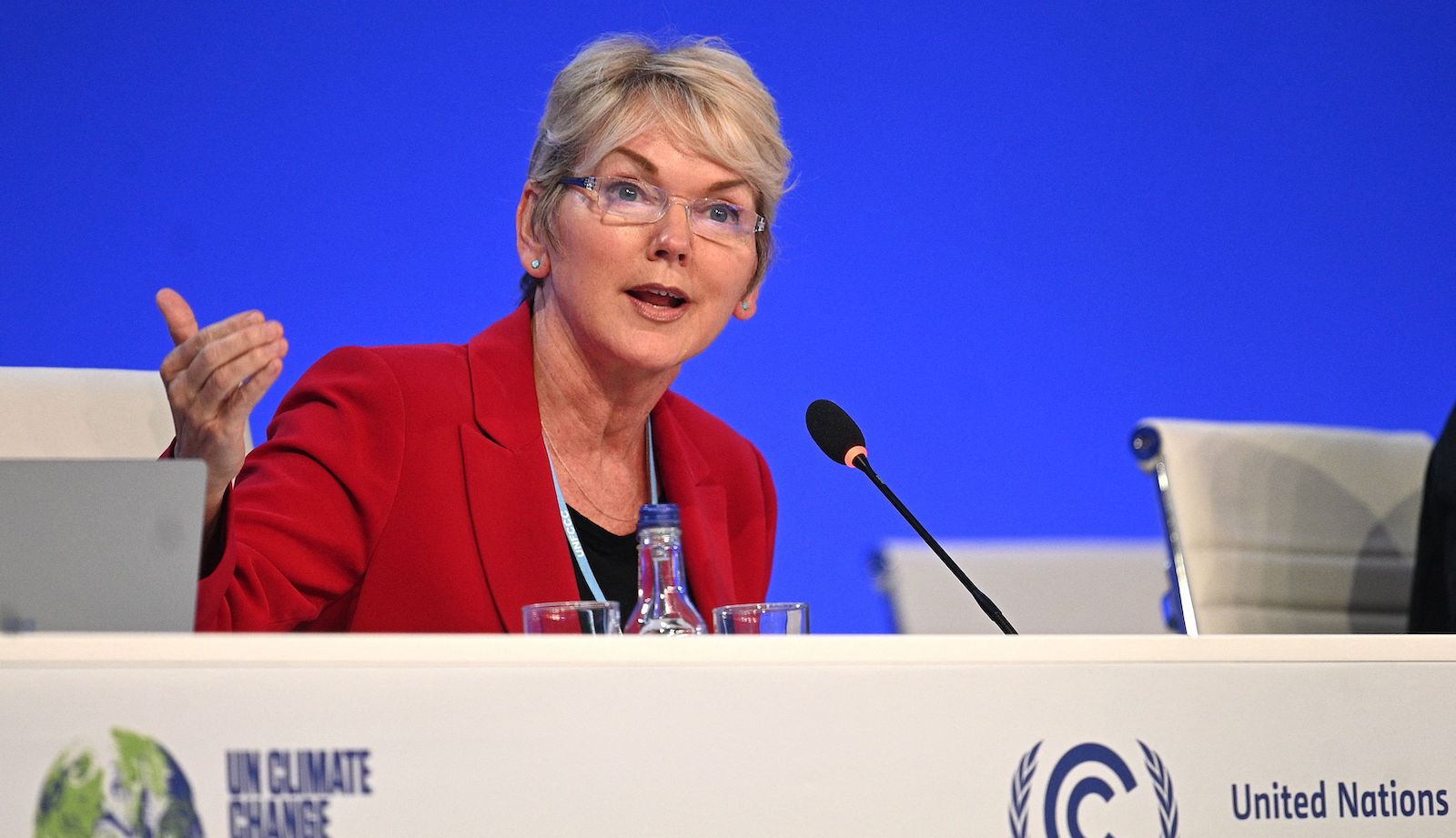The U.S. government has a new goal to make it much cheaper to suck carbon dioxide out of the air. On Friday, at the United Nations’ climate conference, Secretary of Energy Jennifer Granholm announced her agency’s new “Earthshot Initiative” to bring the cost of removing carbon dioxide from the atmosphere and storing it securely below $100 per metric ton.
The Earthshots program is the Department of Energy’s attempt to help scale up some of the nascent technologies that could be required to cut greenhouse gas emissions and to make them cheaper. Today, we know how to generate clean electricity from the sun, wind, water, and the latent heat beneath the Earth’s surface. But we don’t yet have economical ways to fly airplanes, power large ships, make key materials like steel or cement, or grow food without sending planet-warming emissions into the atmosphere.
The Carbon Negative Shot is the third program in the Earthshots series. The Department of Energy announced a Hydrogen Shot, a program to make clean hydrogen fuel 80 percent cheaper than it is today, in June. The agency also introduced a Long Duration Storage Shot, with an aim to reduce the cost of storing at least 10 hours’ worth of energy for the electric grid, in July. (Grid batteries will be needed to supply power at times when renewable energy isn’t available.)
“Bringing those technologies to the market will not happen if we leave everything to energy markets,” said Fatih Birol, the executive director of the International Energy Agency, at the press conference on Friday. “We need governments to push the button of innovation here.”
Carbon dioxide removal doesn’t directly cut emissions from any particular industry, like agriculture or aviation. But if other solutions don’t emerge to clean up flying or fertilizers, carbon removal can be deployed to counteract continued emissions and stabilize the amount of carbon in the atmosphere. That’s why United Airlines, for example, has invested in a direct air capture plant under development in Texas. In addition to balancing out any remaining emissions that can’t be eliminated, scientists say carbon removal is the only way the world could eventually reverse global warming, by sucking more carbon out of the atmosphere than we’re putting in.
In order to understand which methods work best and how to deploy them sustainably, the research has to start now. The new carbon dioxide removal Earthshot will look at the entire spectrum of ways to remove carbon from the atmosphere and store it, including nature-based solutions like trees and soils, mineral-based methods that involve crushing up rocks so that they absorb carbon more quickly, and direct air capture, which refers to new technologies that suck carbon directly from the air and pump it underground.
During a panel about the announcement at COP26, Jennifer Wilcox, the principal deputy assistant secretary for the Office of Fossil Energy and Carbon Management at the Department of Energy, noted that many nature-based solutions cost less than $100 per metric ton today. But there are open questions about how permanent the carbon storage is. She said one of the agency’s goals is figuring out ways to monitor and verify storage over the long term to ensure these methods are truly having a net positive impact on the climate.
“What does it cost over the course of 100 years to ensure that the tillage isn’t happening on the soil such that the carbon isn’t re-emitted into the atmosphere?” she asked. “How do we ensure forests are managed to minimize risk of fires? We don’t truly know what those costs are today for nature-based solutions.”
The same can be said for direct air capture systems. It remains to be seen whether the Texas plant that United Airlines is investing in will have a net benefit for the climate. It will be powered, in part, by natural gas, and some of the captured carbon will be sold to oil companies and used to help pump more oil out of aging wells. Hundreds of environmental groups in the U.S. oppose the idea of direct air capture plants due to concerns that polluting industries will use them as an excuse to prolong the burning of fossil fuels.
Other designs are possible — the largest direct air capture machine that exists today, in Iceland, runs on renewable energy and simply pumps the CO2 underground, where over time, it turns into stone. But that process costs hundreds of dollars per metric ton today.
The Earthshot program will get a big boost once the infrastructure bill that has been sitting in Congress is finally signed. The bill includes $3.5 billion over the next five years for four direct air capture demonstration projects.
“That is huge,” Granholm said on Friday. “It will really give us an idea about where this technology is going.”



